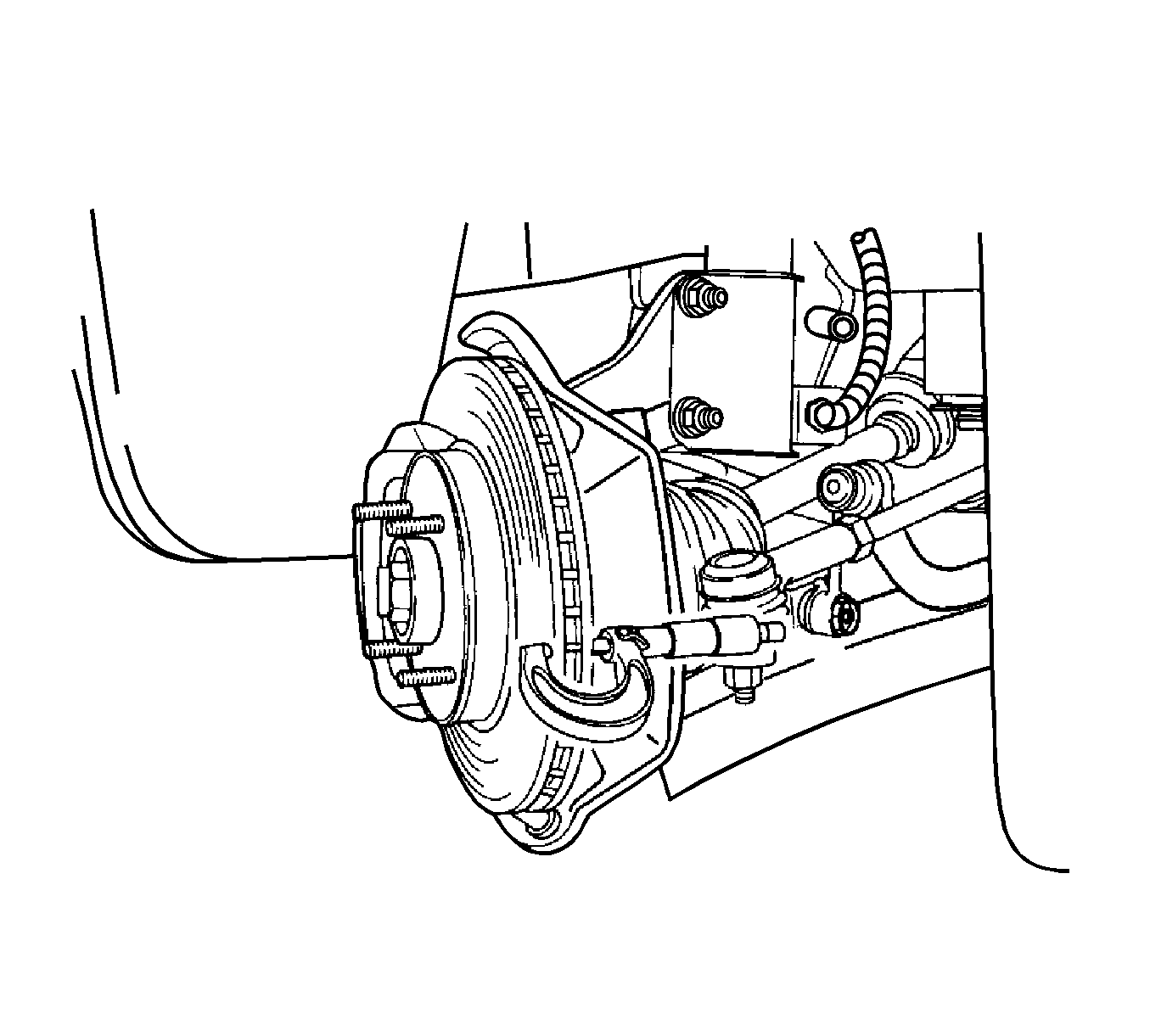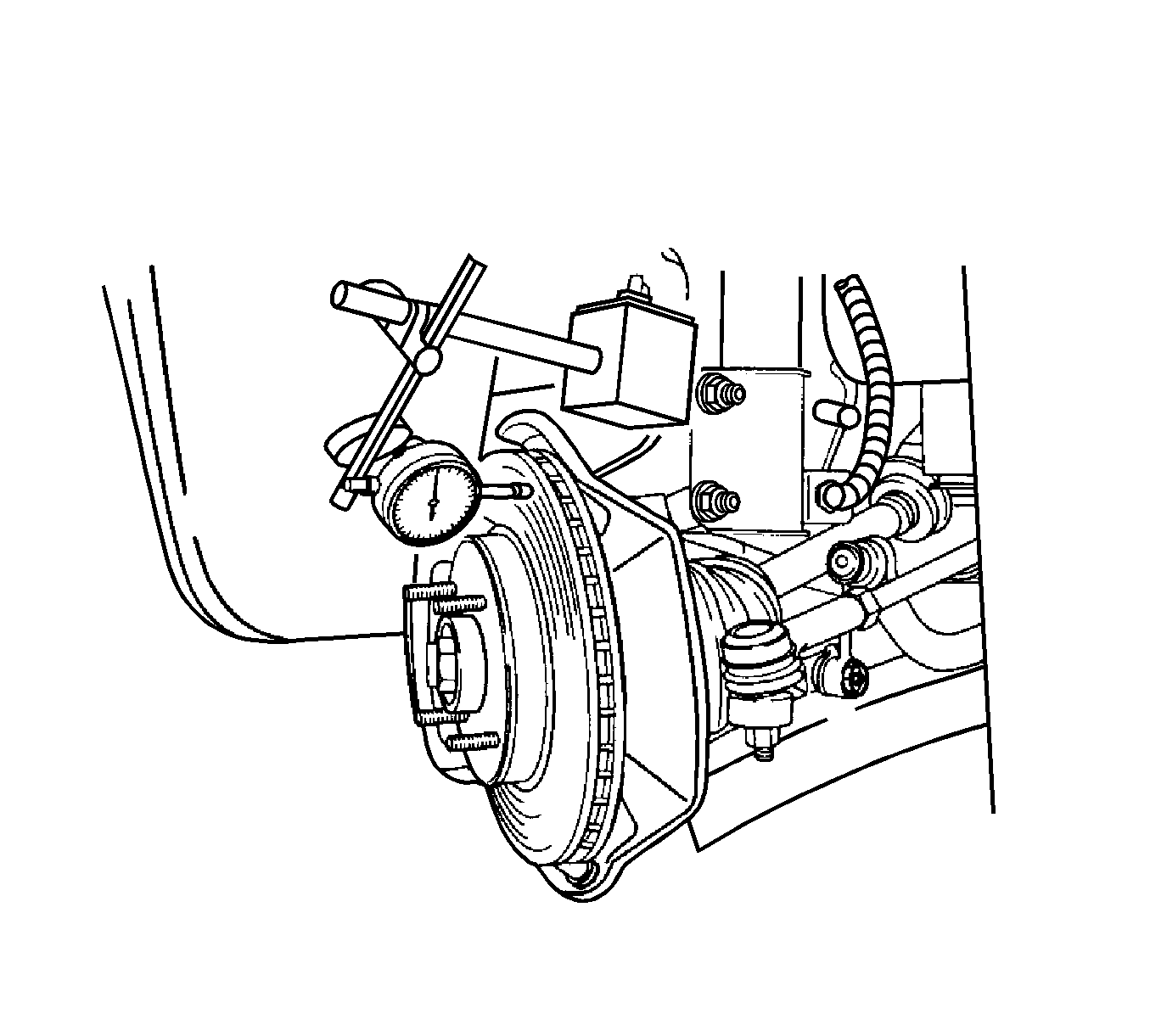Brake rotors are manufactured with close tolerances for thickness variation, flatness, and lateral runout, but pits and grooves are created in rotors during usage. Lack of uniformity of the braking surfaces of the rotor can cause inadequate braking and a pulsating pedal during braking. The surface finish of the rotor is also important because an unsuitable finish can cause pulling and rapid wear of the brake shoe lining. If a rotor does not meet the specification, it should be refinished to specification or replaced. Refinishing of the rotor should only be done with precision equipment.
Thickness variation can be checked by measuring the thickness of the rotor at four or more points around the circumference of the rotor. All measurements must be made at the same distance from the edge of the rotor. Rotor thickness that varies by more than 0.03 mm (0.001 inch) can cause pedal pulsation and/or front end vibration during braking. Thickness can be measured with a commercially available micrometer. Refer to Brake System Specifications .

Light scoring of the rotor surfaces is acceptable if it does not exceed 0.40 mm (0.016 inch) in depth. Scoring measurements can be made with a commercially available brake micrometer.
Lateral runout with the brake rotor installed on the vehicle cannot exceed 0.06 mm (0.002 inch). Use a commercially available dial indicator to check the lateral runout according to the following procedure:
- Position the transaxle in NEUTRAL and raise the vehicle. Refer to Lifting and Jacking the Vehicle .
- To preserve wheel balance, mark the relative positions of the wheel and hub, and remove the front wheel. Refer to Tire and Wheel Removal and Installation .
- Remove the brake rotor. Refer to Front Brake Rotor Replacement or to Rear Brake Rotor Replacement .
- Clean the rotor.
- Clean the hub.
- Verify the hub to rotor contact surfaces are smooth and free from burrs.
- Fasten the brake rotor to the wheel hub.
- Mount a dial indicator.
- Place the indicator tip approximately 10 mm (0.39 inch) from the outer edge of the brake rotor, perpendicular to the disc and under slight preload. Observe the indicator gage while rotating the rotor.
- Compare the measurements to the specifications. Refer to Brake System Specifications
- Remove the dial indicator and wheel nuts.
- If necessary, refinish the rotor with precision equipment. Measure the runout again after refinishing. If the runout exceeds 0.06 mm (0.002 inch) after refinish, the rotor should be replaced.
- Complete the rotor installation. Refer to Front Brake Rotor Replacement or the Rear Brake Rotor Replacement .
- Align the marks that were made before wheel removal, and install the front wheel. Refer to Tire and Wheel Removal and Installation .
- Lower the vehicle.

